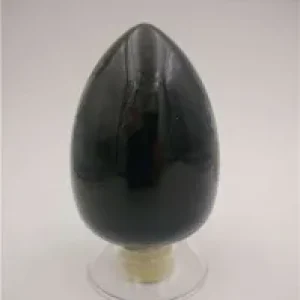Hafnium carbide (HfC) is a refractory ceramic compound known for its exceptional hardness, high melting point, and excellent thermal and electrical properties. Here are the key parameters defining its characteristics:
- Chemical Formula: HfC
- Molecular Weight: Approximately 191.26 g/mol
- Appearance: Hafnium carbide appears as a grayish-black, crystalline powder.
- Density: Around 13.6 g/cm³, making it one of the densest carbides, which is beneficial for radiation shielding and high-density applications.
- Melting Point: It has an extremely high melting point, estimated to be around 3890°C (7054°F), which is among the highest for any binary compound.
- Thermal Conductivity: HfC exhibits excellent thermal conductivity, typically ranging from 20 to 30 W/(m·K), depending on the purity and microstructure, making it useful in high-temperature environments.
- Hardness: Hafnium carbide is incredibly hard, with a Vickers hardness approaching 2500 Hv, surpassing many other hard materials like tungsten carbide.
- Chemical Stability: It is highly resistant to chemical attack, maintaining its integrity in aggressive environments and at high temperatures.
- Oxidation Resistance: Forms a protective hafnia (HfO₂) layer when exposed to oxygen at high temperatures, enhancing its stability and longevity in oxidizing atmospheres.
- Thermal Expansion Coefficient: HfC has a relatively low coefficient of thermal expansion, which is advantageous for applications requiring dimensional stability over a wide temperature range.
- Electrical Conductivity: While not a conventional conductor, HfC displays moderate electrical conductivity, which can be beneficial in certain electronic applications.
- Manufacturing: Synthesized typically through reaction sintering of hafnium oxide with carbon in a reducing atmosphere at very high temperatures.
- Applications: Due to its unique combination of properties, HfC is used in high-temperature structural materials, particularly in aerospace and nuclear industries, as a component in ultra-high-temperature ceramics (UHTCs), rocket nozzles, and as a neutron absorber in nuclear reactors.
-
Grain Structure: The microstructure, including grain size and morphology, significantly influences the material’s properties. Fine-grained HfC can offer improved toughness without sacrificing hardness.
